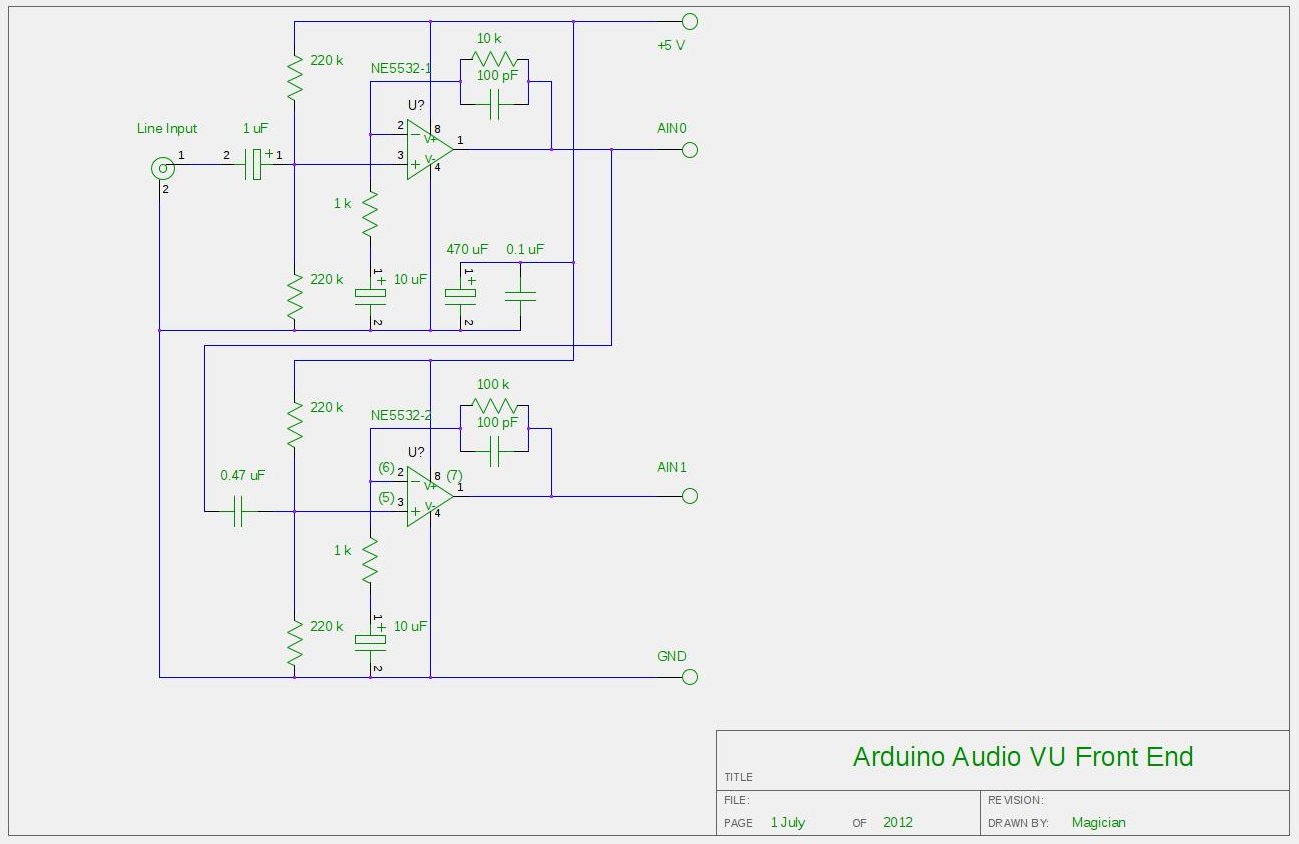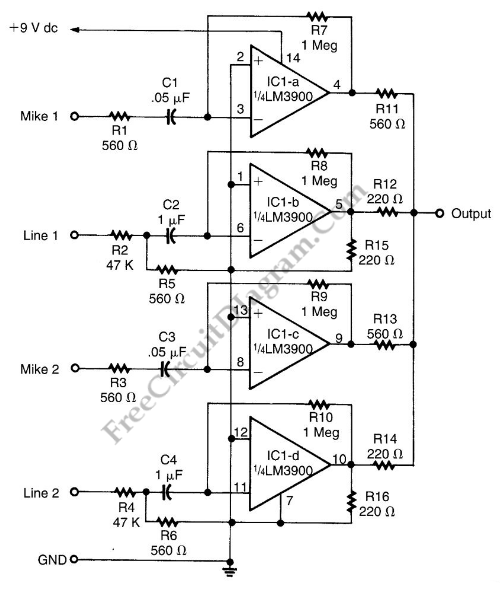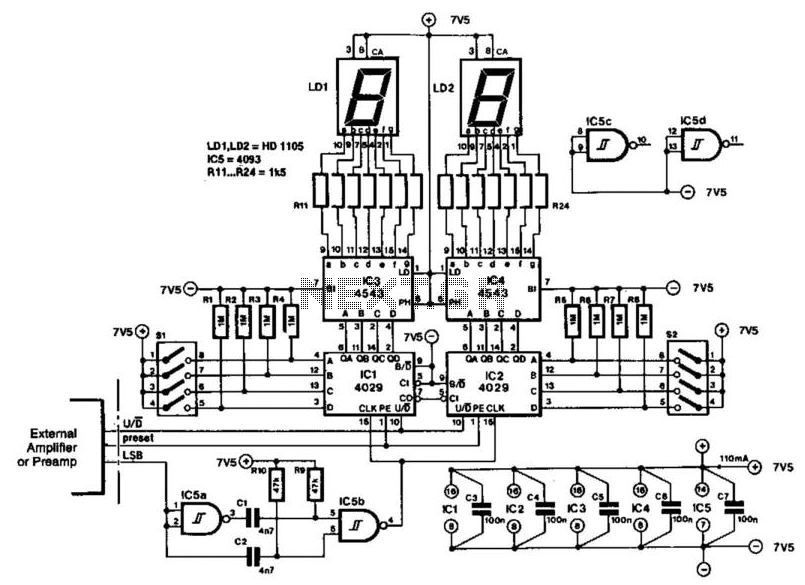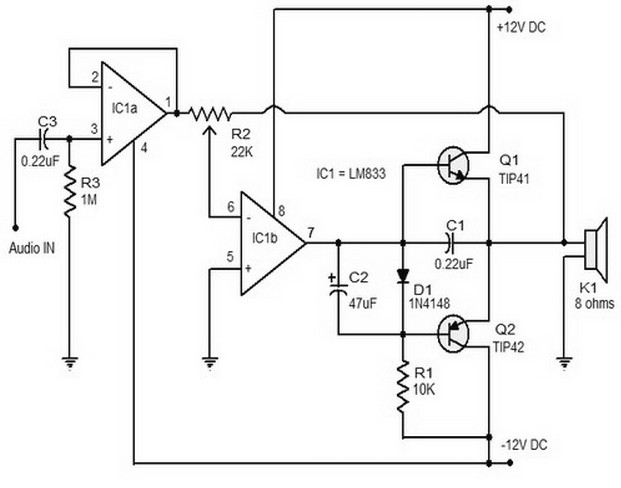
Low distortion audio gain limiter
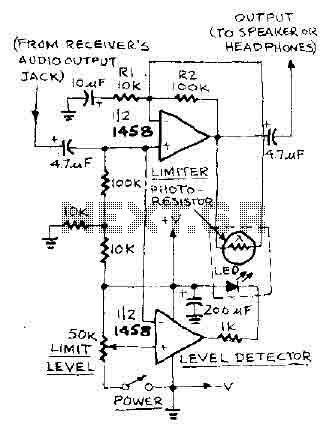
The level at which the limiter activates in audio can be adjusted using the LIMIT LEVEL selector knob. When this threshold is surpassed, the output of the half-limiting detector within the op-amp, functioning as a comparator, triggers the LED, leading to a rapid decrease in the resistance of the photoresistor. Consequently, this reduction in resistance results in a decrease in the gain of the half-limiting op-amp. When the audio signal drops below the specified limit, the LED turns off, the resistance of the photocell increases, and the gain of the op-amp returns to its normal limited level, which is established by the resistor combination of R1 and R2. A dual polarity power supply of ±12 volts is recommended for the op-amp operation.
The described audio limiter circuit employs an operational amplifier (op-amp) configured as a comparator to regulate audio signal levels. The LIMIT LEVEL selector knob allows for user-defined control over the threshold at which limiting occurs. When the input audio signal exceeds this threshold, the op-amp's output transitions, activating an LED indicator. This activation leads to a rapid decrease in the resistance of a photoresistor, which is part of a feedback loop that influences the gain of the op-amp.
As the signal level falls below the set threshold, the LED deactivates, causing the photoresistor's resistance to increase. This change in resistance allows the op-amp to restore its gain to the predetermined level set by resistors R1 and R2. The circuit's design ensures that audio signals are maintained within a specified dynamic range, preventing distortion or clipping that can occur with excessive signal levels.
For optimal performance, the op-amp requires a dual polarity power supply, typically ±12 volts. This voltage range is essential for the op-amp to operate effectively within its linear region, allowing for accurate signal processing. The choice of components, including the values of R1 and R2, should be made based on the desired limiting characteristics and the specific application requirements. Overall, this audio limiter circuit is a valuable tool for maintaining audio fidelity in various electronic applications.The level at which the limiter kicks in audio can be adjusted with the selector knob LIMIT LEVEL. When this level is exceeded, the output of the half-LIMITING detector of the op-amp (used as a comparator) turns the LED causes the resistance of the photoresistor to decline rapidly. It is in tum causes the gain of Ie half LIMITED op-amp to decrease. When the signal falls below the desired limit, the light goes out, the resistance of the photocell increases and the gain of the op-amp back to its normal level LIMITED one set by the combination of resistors RI and R2 . A dual polarity power supply (± 12 volts is desirable) is required for the op-amp.
The described audio limiter circuit employs an operational amplifier (op-amp) configured as a comparator to regulate audio signal levels. The LIMIT LEVEL selector knob allows for user-defined control over the threshold at which limiting occurs. When the input audio signal exceeds this threshold, the op-amp's output transitions, activating an LED indicator. This activation leads to a rapid decrease in the resistance of a photoresistor, which is part of a feedback loop that influences the gain of the op-amp.
As the signal level falls below the set threshold, the LED deactivates, causing the photoresistor's resistance to increase. This change in resistance allows the op-amp to restore its gain to the predetermined level set by resistors R1 and R2. The circuit's design ensures that audio signals are maintained within a specified dynamic range, preventing distortion or clipping that can occur with excessive signal levels.
For optimal performance, the op-amp requires a dual polarity power supply, typically ±12 volts. This voltage range is essential for the op-amp to operate effectively within its linear region, allowing for accurate signal processing. The choice of components, including the values of R1 and R2, should be made based on the desired limiting characteristics and the specific application requirements. Overall, this audio limiter circuit is a valuable tool for maintaining audio fidelity in various electronic applications.The level at which the limiter kicks in audio can be adjusted with the selector knob LIMIT LEVEL. When this level is exceeded, the output of the half-LIMITING detector of the op-amp (used as a comparator) turns the LED causes the resistance of the photoresistor to decline rapidly. It is in tum causes the gain of Ie half LIMITED op-amp to decrease. When the signal falls below the desired limit, the light goes out, the resistance of the photocell increases and the gain of the op-amp back to its normal level LIMITED one set by the combination of resistors RI and R2 . A dual polarity power supply (± 12 volts is desirable) is required for the op-amp.


